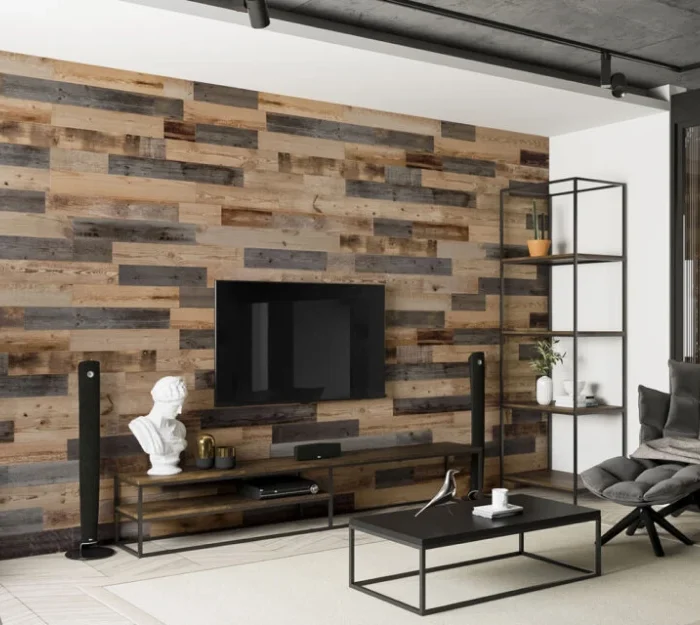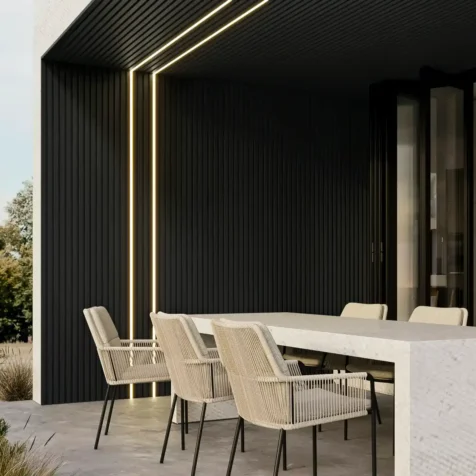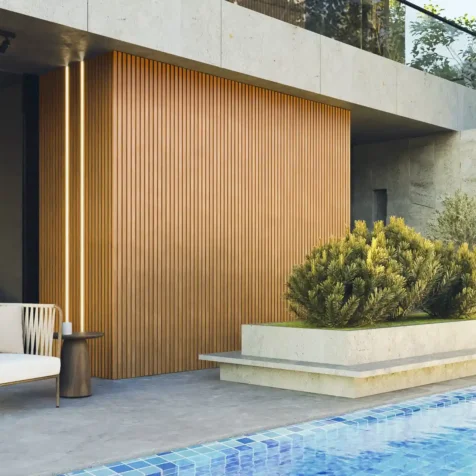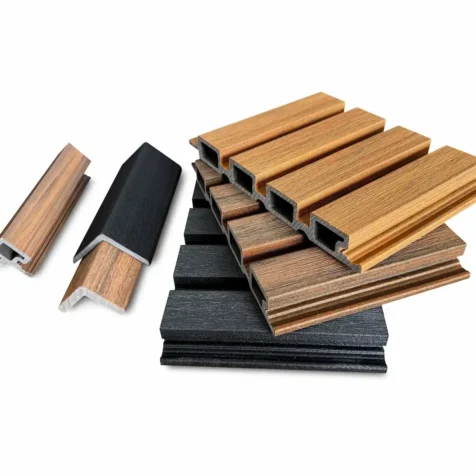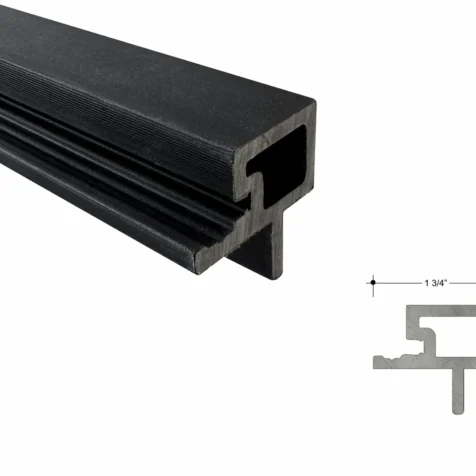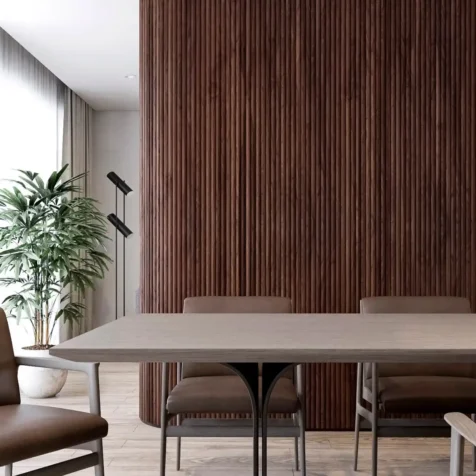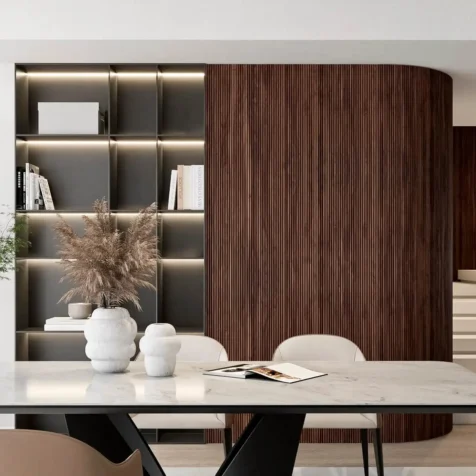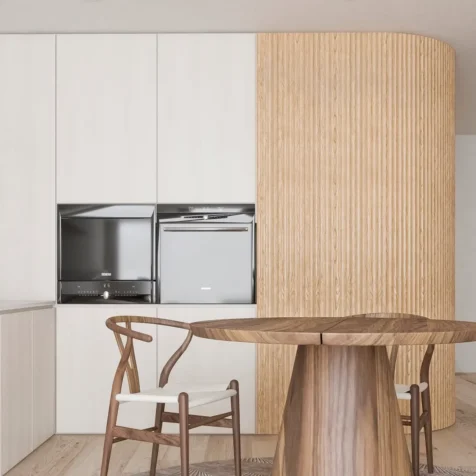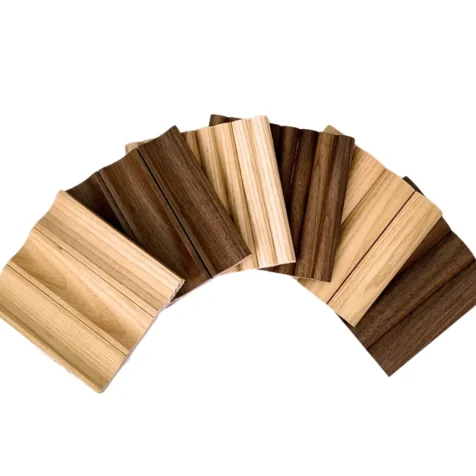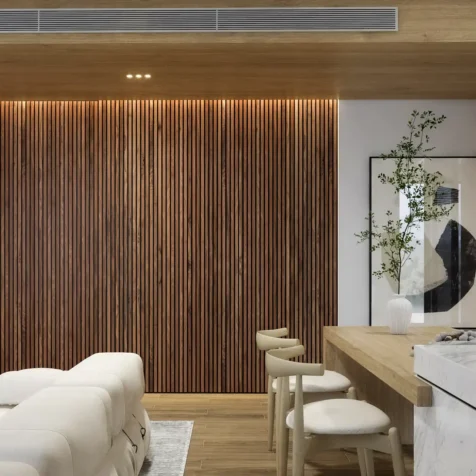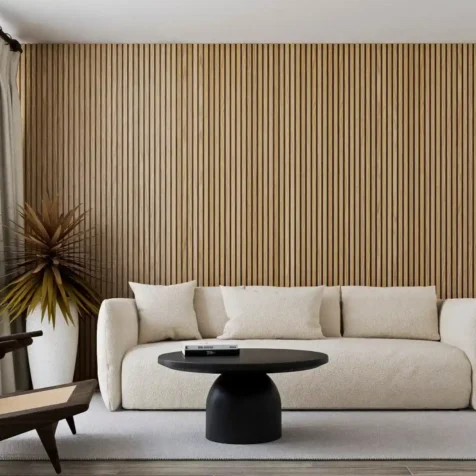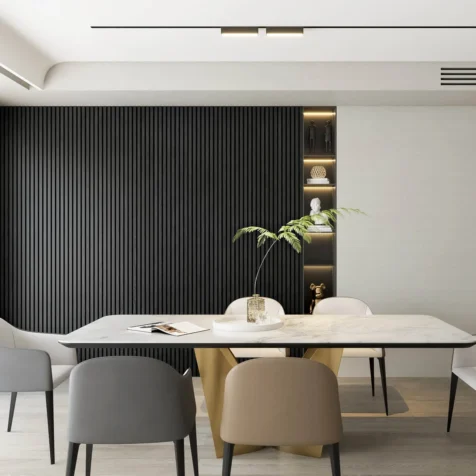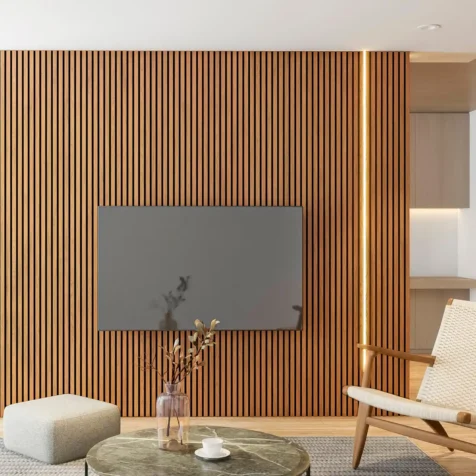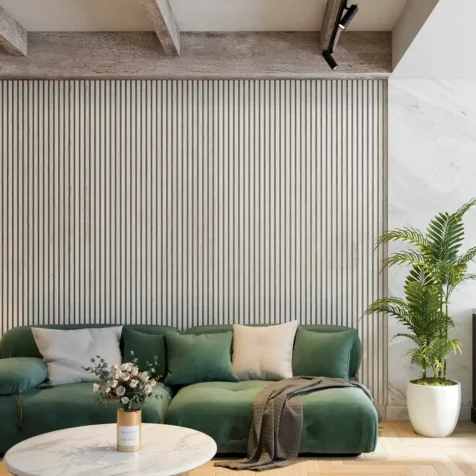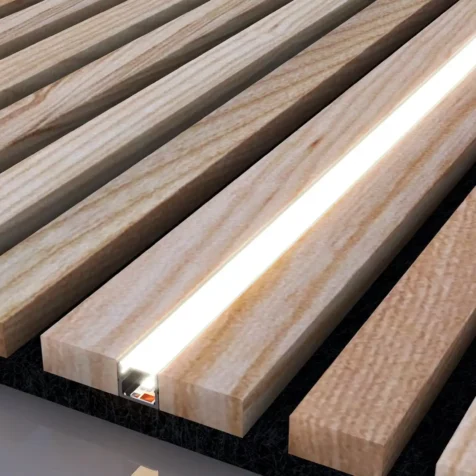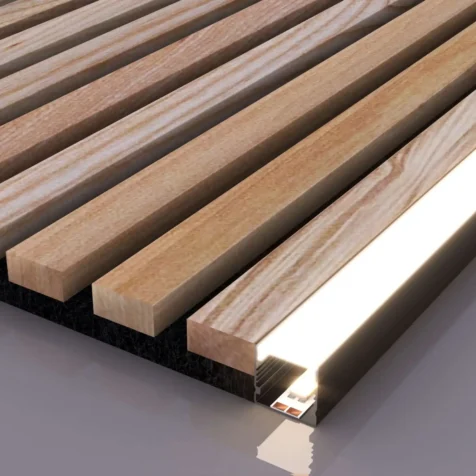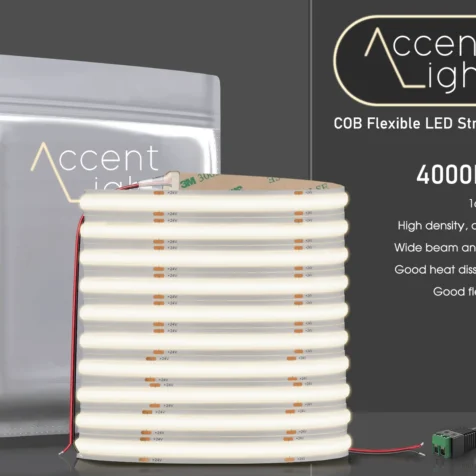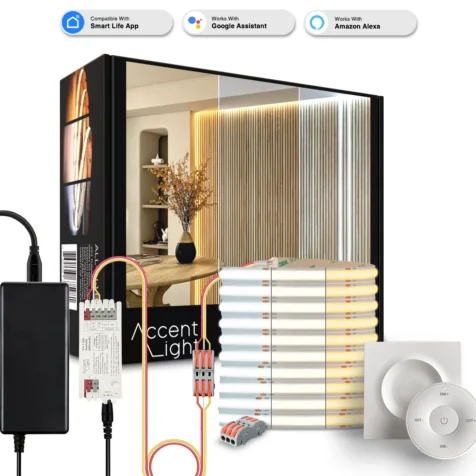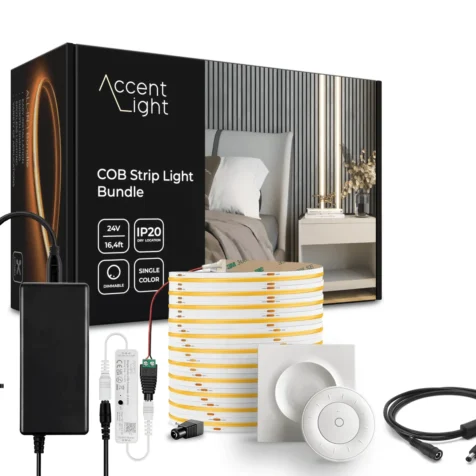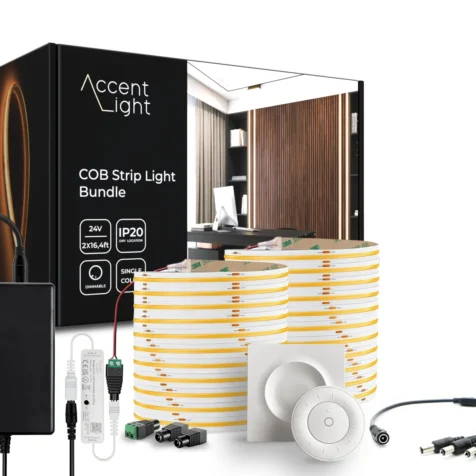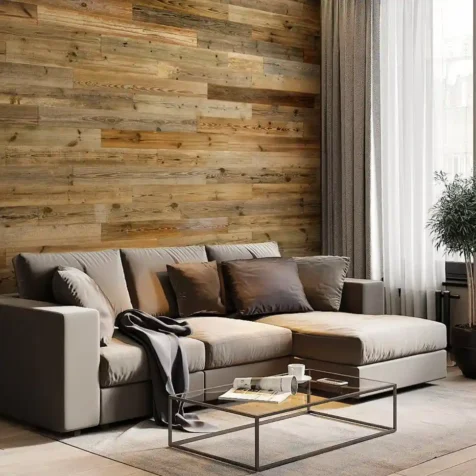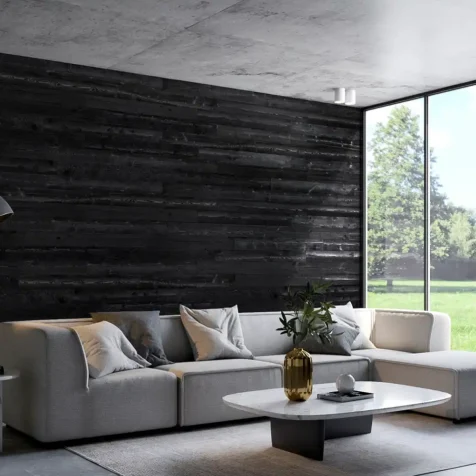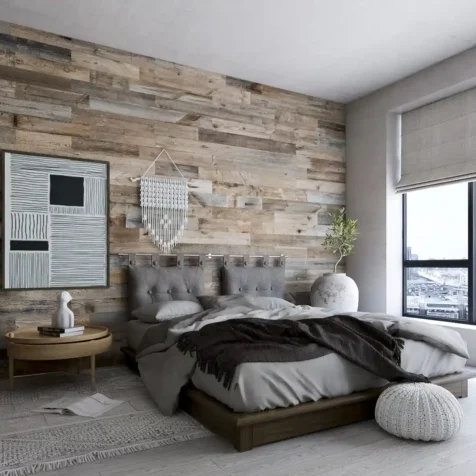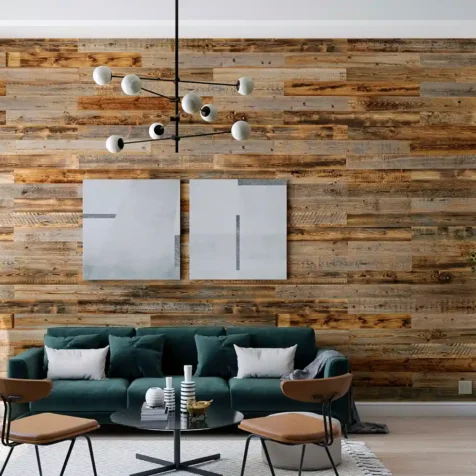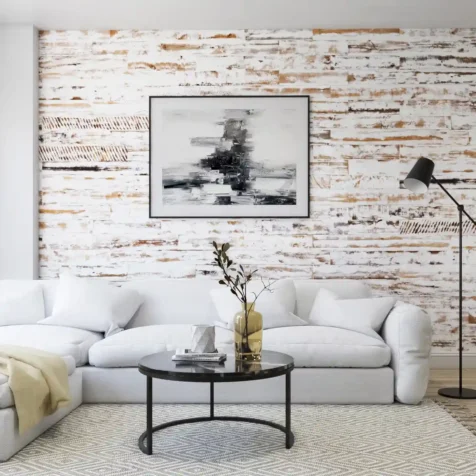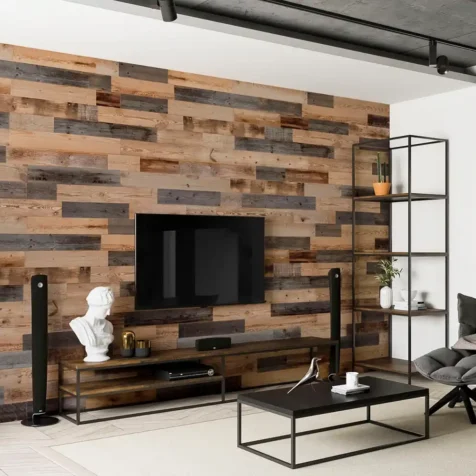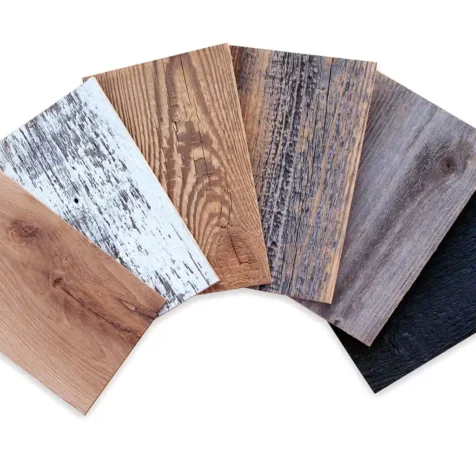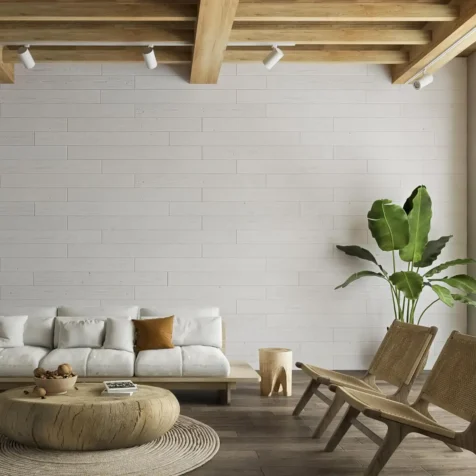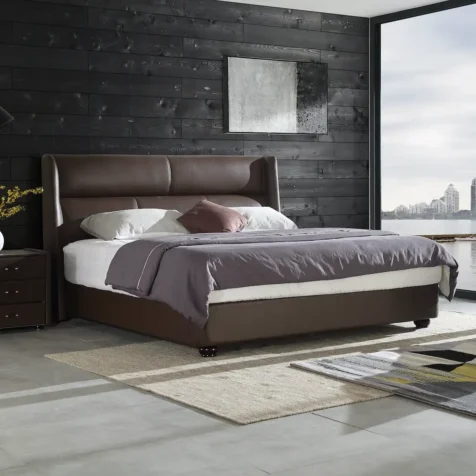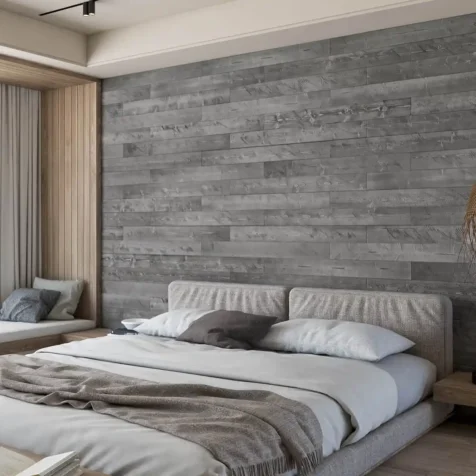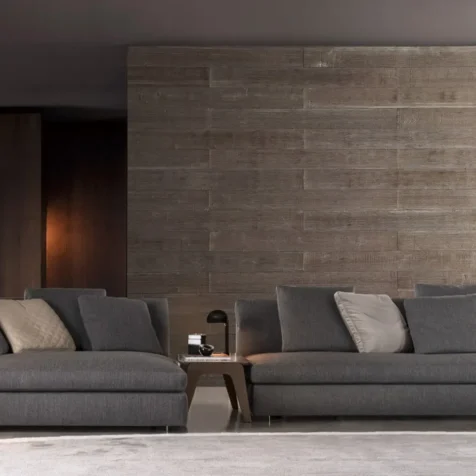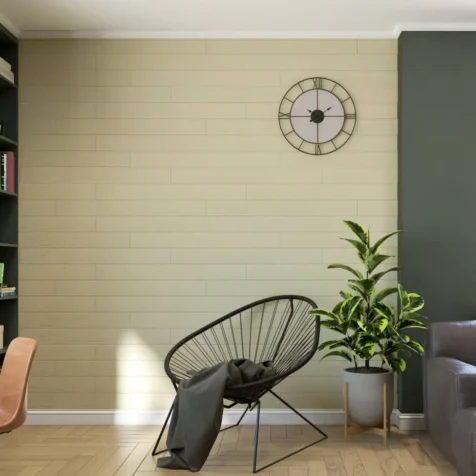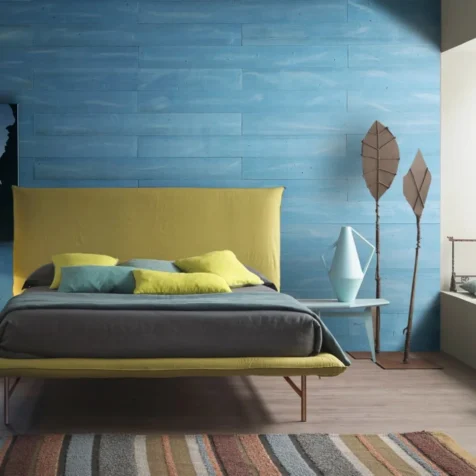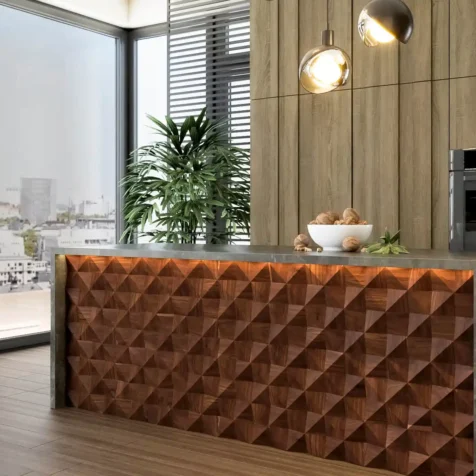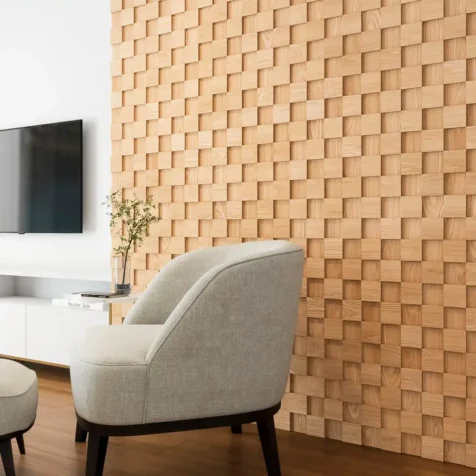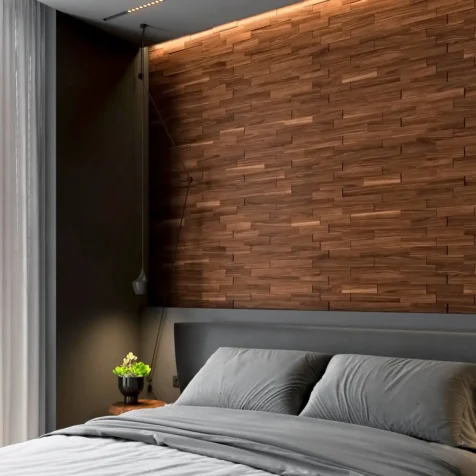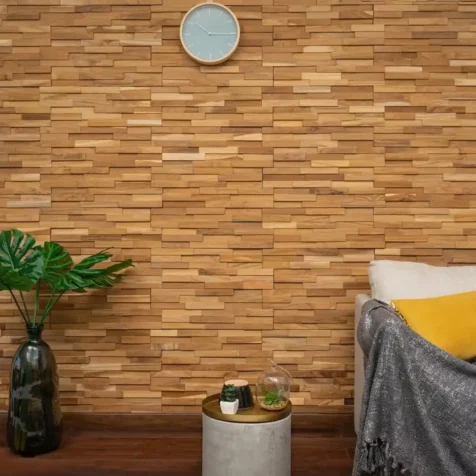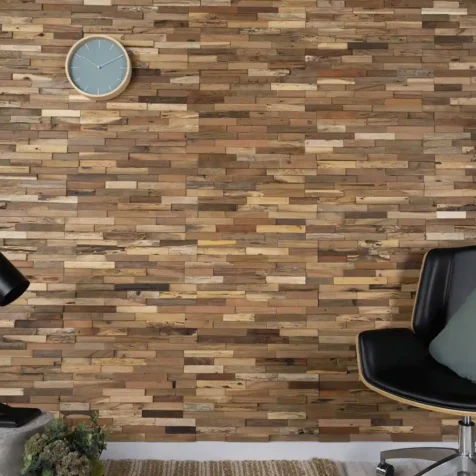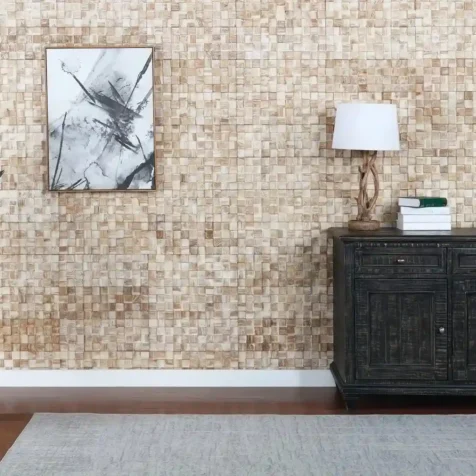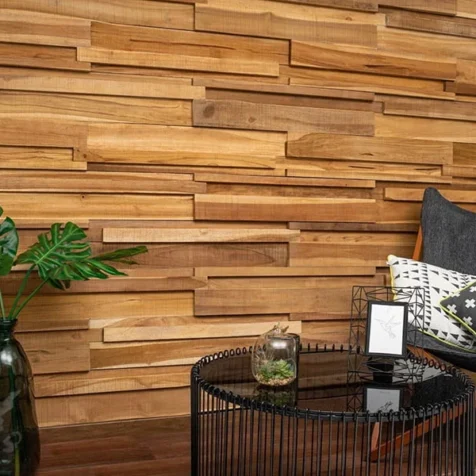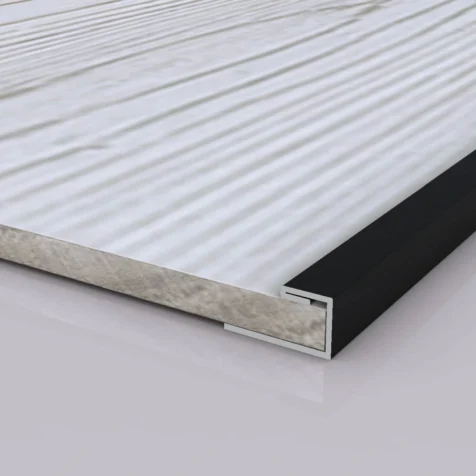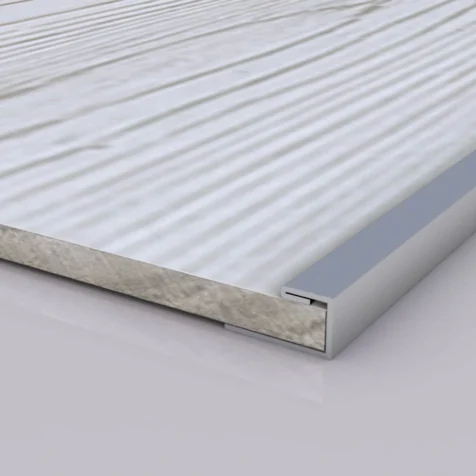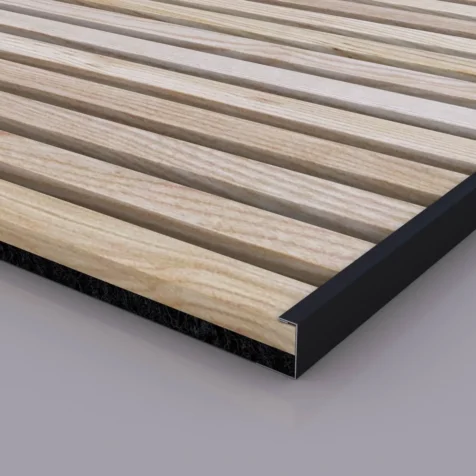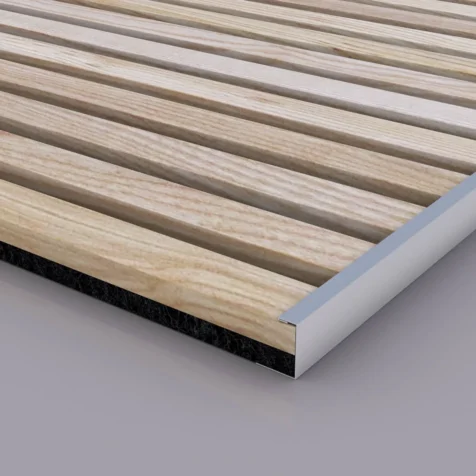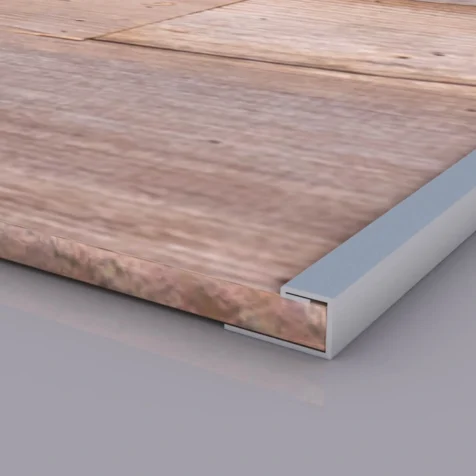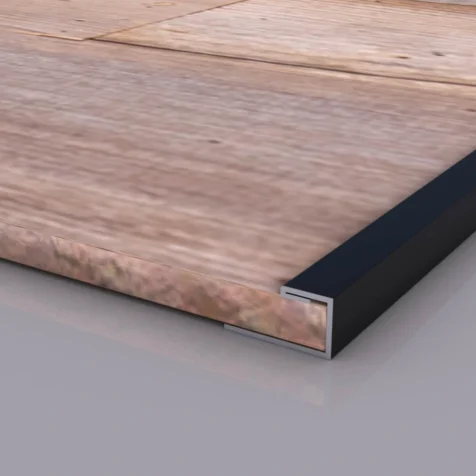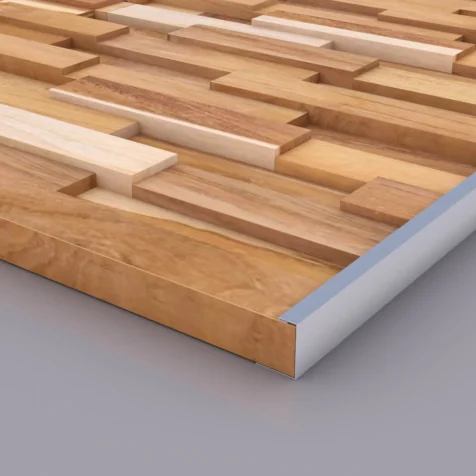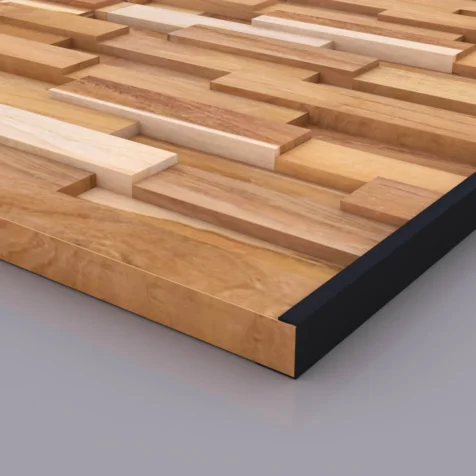Shiplap vs Tongue and Groove: What is The Difference?
Choosing the right paneling could supplement the elegance of the interior of your home. Comparing shiplap vs tongue and groove will show the unique selling point of each style as well as how best it can be visually appealing.
Shiplap has a beautiful, rustic look and is relatively simple to install, while tongue and groove panels are more sophisticated and have a timeless beauty. In this post, we will go into more depth about these two widely used paneling techniques to help you choose the best one for the space you wish to transform.
What is Shiplap?
Shiplap wall paneling is well-known for its intriguing history and sleek, modern appearance. With its distinctive overlapping board shape that keeps water out, it was originally intended to be used as a covering for ships. Each board has a groove down the back that fits firmly onto the subsequent board.
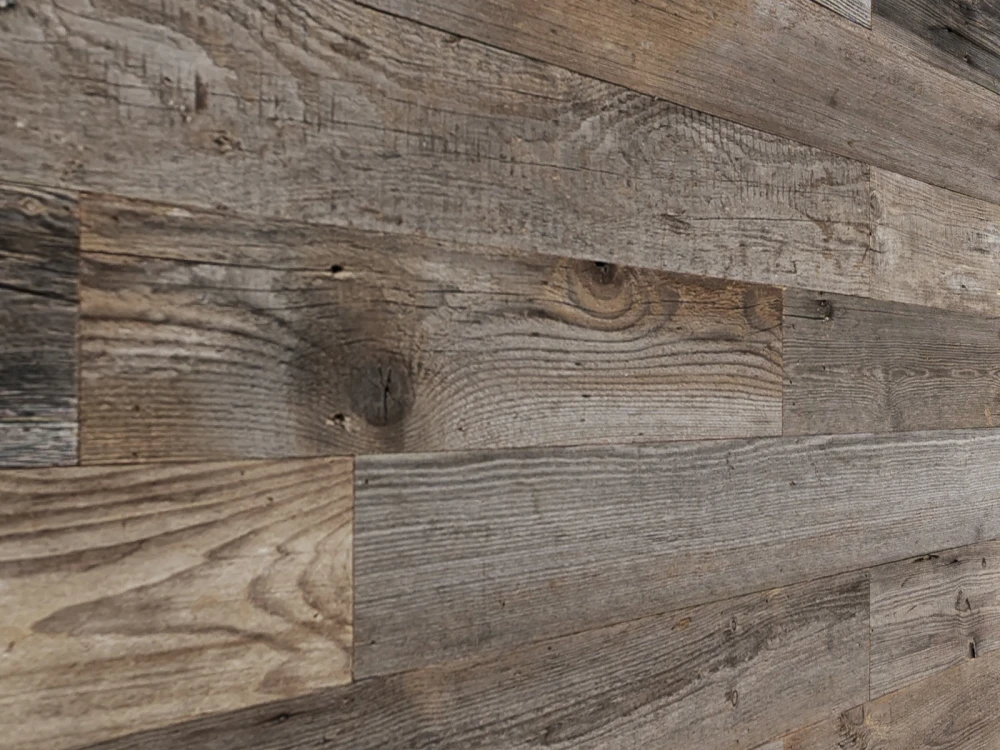
Photo from WoodyWalls
More homeowners use it for accent walls and other creative elements, its attractiveness has significantly increased in recent years. Crafted with a rabbet joint, the shiplap’s clean exterior and neat edges provide beauty to interior areas.
What is Tongue and Groove?
Tongue and groove paneling is an old construction technique that is often associated with classic charm and timeless elegance. It has always remained a popular choice for floor, wall, and ceiling decoration.

Photo from Wikimedia Commons
Tongue and groove boards have a corresponding “groove” on one side and an attached “tongue” on the other side. The two boards fit together to create a perfect interlock. The interlocking tongue and groove of adjacent boards form a strong and tight junction. Thus, this mechanism gives not only a fine look to any creation but also durability and resistance.
What is The Difference Between Shiplap vs Tongue and Groove?
Shiplap vs tongue and groove has different design elements. Shiplap panels are fairly easy to install because their ends overlap one another in an L shape, while tongue and groove panels are more stable because of their interlocking structure.
It may expand and shrink due to changes in temperature.
The interlocking design of tongue and groove, featuring an airtight seal that enhances insulation, renders it more durable than shiplap, particularly in cold climates.
| Tongue and Groove | Shiplap | |
|---|---|---|
| Material | Shiplap was made out of pine boards; now it is available in different types, including solid wood, engineered wood, and vinyl. | Tongue and groove panels are composed of solid wood, like pine and oak, engineered wood, and plastics. |
| Appearance | The larger gaps between the boards highlight the rustic appeal of shiplap, giving in an overall textured and relaxed atmosphere. | The smooth interlocking tongue and groove panels give the area a polished and modern appearance. |
| Durability | Shiplap efficiently deters water, but in very humid areas, you should apply a protective finish. | The interlocking design of tongue and groove, featuring an airtight seal that enhances insulation, renders it more durable than shiplap, particularly in cold climates. |
| Price | Cheaper than tongue and groove, $2.50 to $7 per square foot. | Slightly more expensive, $4 to $8 per square foot. |
| Installation | Shiplap can be easily installed by mounting the boards horizontally or vertically without requiring much preparation. | Tongue and groove installation demands exact fitting. It is more difficult because it requires methods like blind nailing for a neater appearance. |
| Sustainability | The materials chosen will determine how long the shiplap lasts. You can choose panels made from sustainably sourced wood. | Similarly, the sustainability of tongue and groove panels varies depending on the materials used. Also, sustainably sourced wood materials are also available. |
| Customization | Shiplap comes in a variety of wood species and finishes, painting it popular white or using bold colors can create a contemporary look. | Tongue and groove panels can also be customized with various wood types and finishes, making it easy for you to match your style choices. |
| Pros | Shiplap is quite adaptable and is simple to paint or stain to match the decor. | Tongue and groove panels offer excellent stability and airtight seal thanks to their interlocking construction. It can be used for various home areas. |
| Cons | It is challenging to clean when dust gets compiled in the shiplap’s crevices. The boards also need a protective coat and fitting closely to prevent damage from moisture and dust. | Dry temperatures cause wood to shrink, which could lead to gaps in the panels. Installation requires experience and skills for a precise fit. |
| Best Uses | Shiplap works great for interior and exterior wall construction and is rarely used as flooring. | For many interior applications, such as flooring, wall coverings, and ceiling designs, tongue and groove panels are a popular option. |
Shiplap vs Tongue and Groove: Which Is Better?
Shiplap vs tongue and groove, each solution has distinct advantages to meet your demands. When choosing between shiplap and interlocking boards, you should take into account your installation ease, desired aesthetics, and budget.
Budget
Shiplap is usually less expensive due to its larger panels and quicker installation. Conversely, tongue and groove panels may initially cost more, but they typically endure longer and may require fewer repairs.

Photo from WoodyWalls
The best option will ultimately come down to the type of wood for shiplap vs tongue and groove you choose and how much you are willing to spend compared to possible long-term savings.
Style
Depending on style and preference, paint or stain can be applied to the surface to gain the best enhancement for the project.
Tongue and groove paneling offers a warm and classic look that can work very well in many different types of settings.
Conversely, by using shiplap paneling and inspiration from vintage barns, you can create a cozy farmhouse vibe. It has a modern and minimalistic appearance that exudes relaxation. Explore more creative shiplap kitchen backsplash in this article.
Installation
Shiplap paneling and tongue and groove paneling both require installation expertise, although tongue and groove can be trickier due to the requirement for exact board fitting. On the other hand, the design of shiplap makes installation quicker and requires less prep. It is typically nailed onto wall studs.
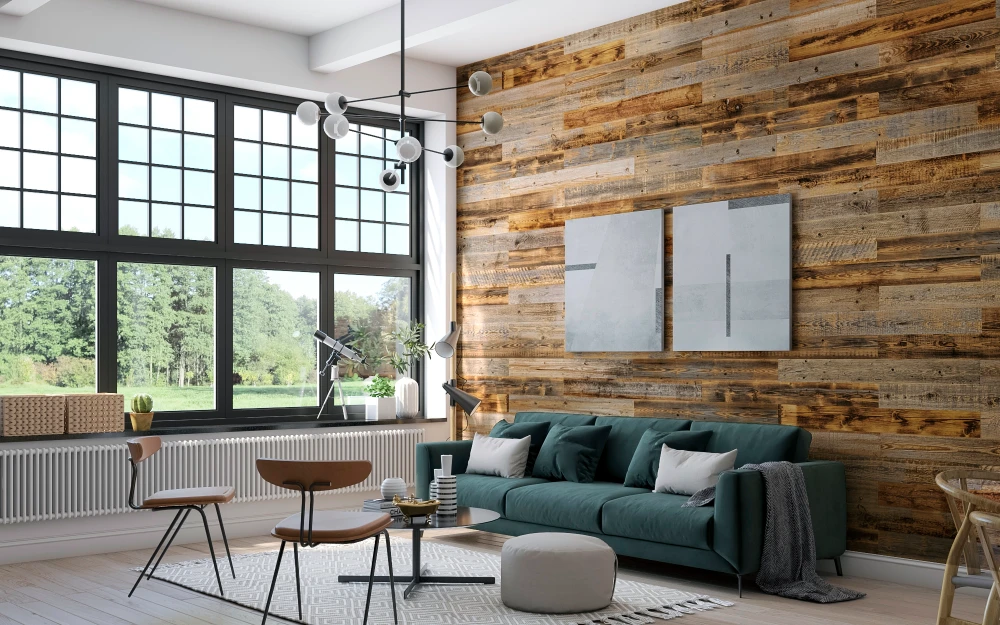
Photo from WoodyWalls
Shiplap vs Tongue and Groove: Explore More On WoodyWalls
When comparing shiplap vs tongue and groove paneling, both choices have distinct advantages for enhancing the design of your home. Shiplap is ideal for creating a modern farmhouse look as it installs easily and gives a warm and rustic feel. Conversely, tongue and groove panels increase durability and insulation while also providing a classy and refined appearance.
Either choice can significantly improve your living area. Don’t miss the opportunity to improve the appearance of your house with gorgeous design ideas and premium hardwood wall panels from WoodyWalls.

